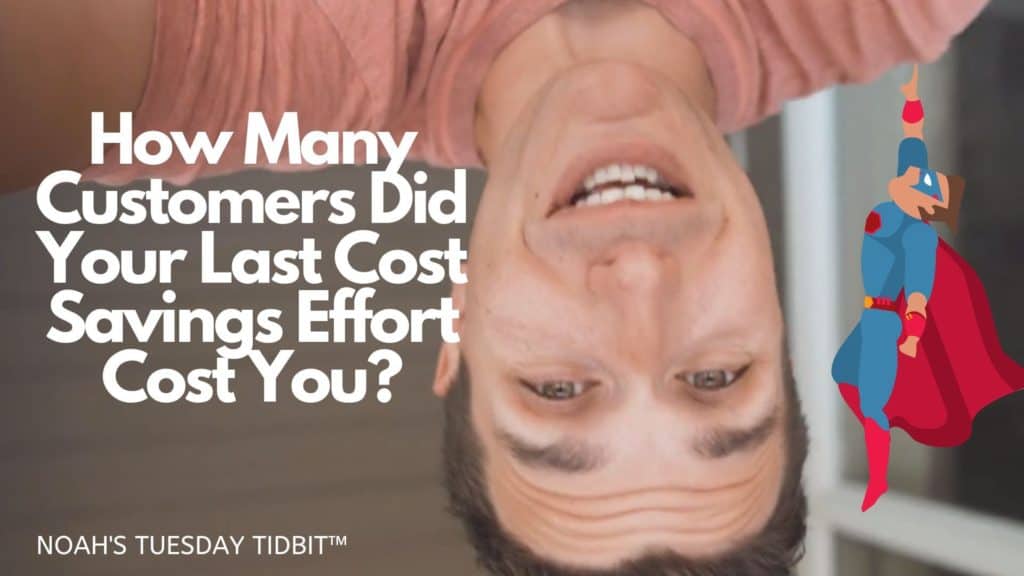In my last book, Dealing with Difficult Customers, my co-author Shawn Veltman and I wrote about an exercise we do with companies called "Bizarro World," where you try to come up with processes, products, and service ideas that would make your clients hate doing business with you.
After reviewing a prospective clients automated phone system, I thought they had put it together for me to demonstrate "Bizarro World," and I was half-way through congratulating them on that when I realized that no, that was indeed their real system.
Today's video is only a minute long… Check it out here:
The only faint consolation I could find was that it wasn't much worse than many other companies.
Here are some of the things I noted in my test run that seemed specifically designed to enrage their customers:
1. They didn't give a call-back option (instead, making their customers wait on hold).
2. They had frequent "We're experiencing higher than normal call volume" messages – everybody who gets those knows they're most likely a lie, and they're not a convincing lie.
3. They didn't give an option to turn off the "hold" music which was unbearably bad.
4. They frequently interrupted the music, giving the impression that somebody was picking up, only to play a recorded marketing piece.
5. They frequently noted that they have a website and I could submit my request there as if the concept of a company having a website would be foreign to me (not to mention, if I’m calling on the phone, its likely because I want an immediate response time).
6. When I finally spoke to a real person I was asked to repeat all the information I'd already shared multiple times. This is typical in almost ALL of these systems.
7. They had ridiculously long wait times – 15+ minute waits happened daily (in fairness, I was only on hold for 9 minutes during my test run).
Combine all those, and by the time your customer is speaking to a live human being, they're going to be edgy. That makes it harder on your staff, harder on your client, and ultimately will make it much easier for your clients to find reasons to leave you for a competitor.
Perhaps I'm being overly critical here, but there were excited to show me this new system they had just spent an arm, leg, and three months getting set up.
Keep in mind – the client engaged me to help with service improvements AFTER they have paid to have this system implemented. The vendor who’d sold it to them promised happier customers, faster support times, better service, etc. and a whole slew of other promises which would no way be met with this type of system.
One of their accountants had explained to me that by putting this system in place, they were able to save over $80k in staffing costs.
Their average client spent well over $60k/year with them. If this system caused enough annoyance to drive away two clients, it was a net negative.
Alarmingly, it's a net negative that is almost impossible to trace back to its root cause, because companies have a tough time accounting for preventable attrition.
It’s made harder by the reality that customers rarely leave because of one big screwup… instead, small frustrations accumulate, with nothing to offset them, until the straw finally breaks that poor camel's back. Systems like this one dramatically escalate the accumulation of “small annoyances”, and make it much less likely that customers will be forgiving of an honest mistake later.
This is the perfect example of Bizarro World, but it also highlights the potential pitfalls and challenges of trying to incorporate some fancy tool into your business instead of sorting out what exactly your business needs to provide a truly incredible customer experience.
Your customers are the lifeblood of your business. When considering cost-cutting initiatives that create worse experiences for them, there’s a three-step process I recommend:
- Take a moment and list out all the ways that the customers will be inconvenienced or harmed by the new initiative
- Ask yourself if you’re going to be able to re-invest the savings into creating a net-positive experience for customers, instead.
- Give your head a shake and don’t make stupid short-term decisions that will negatively impact your customers.
Where is your business operating in a bizarro world?
Your challenge for this week:
Review all your incoming customer paths for sales and service. See how many hoops customers need to jump through.
Find all the friction points that likely annoy your customers, and ask yourself what immediate steps could you take to reduce that friction.
See you next week,
Noah
